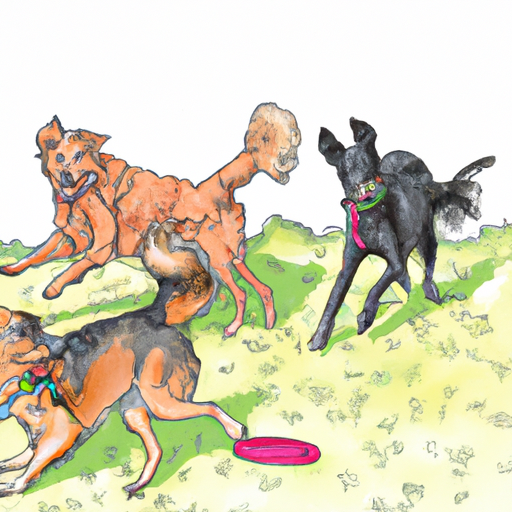Understanding the Basics of Dog Play
You might have noticed your furry friend engaging in various playful activities, from chasing their tail to playing fetch with you. Playing is a crucial part of a dog’s life, providing both physical exercise and mental stimulation. It’s not just about fun, though. It also serves as a training ground for important life skills.
When dogs play, they often mimic behaviors associated with hunting. Playing tug of war, for instance, can mirror the shaking movement dogs use to kill small prey. Don’t be alarmed – this doesn’t mean your dog is aggressive. It’s just their natural instincts kicking in.
But how can you tell if a dog is playing or showing aggression? The answer lies in understanding canine body language.
Interpreting Canine Body Language
Dogs use a range of signals to communicate their intentions during play. Here are some common behaviors you might see:
- Play Bow: This is a clear invitation to play. Your dog will lower their front end while keeping their rear end up in the air.
- Belly Up: If your dog rolls onto their back and exposes their belly, it’s a sign of submission. They’re saying “I’m no threat.”
- Mouth Open and Relaxed: A dog with an open, relaxed mouth is likely in a playful mood.
Keep in mind, every dog is different. Some might be more physical in their play, while others prefer more gentle interactions.
The Art of Play-Fighting
Play-fighting is a favorite pastime for many dogs. However, it’s important to ensure it remains playful and doesn’t escalate into aggression. Here are some guidelines to help you:
- Monitor your dog’s body language.
- Intervene if play becomes too rough or one dog seems uncomfortable.
- Provide breaks to allow dogs to calm down.
Toys and Games Dogs Love
Toys can provide an excellent outlet for your dog’s playful energy. Here’s a table outlining some popular options and their benefits:
| Toy Type | Benefit |
|---|---|
| Fetch Toys (Balls, Frisbees, etc.) | Great for physical exercise |
| Tug Toys (Rope, Stuffed Animals, etc.) | Good for interactive play |
| Puzzle Toys (Treat Dispensers, etc.) | Provides mental stimulation |
Remember, the best toy for your dog will depend on their size, breed, and personal preferences.
Encouraging Healthy Play
As a caregiver, you play a vital role in shaping your dog’s play habits. Here are some tips:
- Set boundaries: Let your dog know what’s acceptable during play and what’s not.
- Provide a variety of toys: This will keep your dog entertained and stimulated.
- Play with your dog regularly: This helps strengthen your bond and provides mental and physical stimulation.
FAQ
Q: Are all dogs naturally playful?
A: While most dogs have a natural instinct to play, the level of playfulness can vary between breeds and individual dogs.
Q: My dog plays rough. Should I be concerned?
A: Not necessarily. Some dogs play more physically than others. However, if your dog’s play consistently escalates into aggression, it may be worth consulting a professional.
Q: How much play does my dog need?
A: It depends on your dog’s age, breed, and health. Generally, most dogs should have at least an hour of exercise each day, which can include play.
Q: Can I use play as a form of training?
A: Absolutely! Many training methods incorporate play to make learning more enjoyable and effective for dogs.



